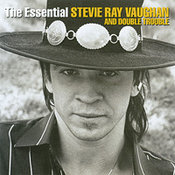 |
|
| History | ||
|
Blues from the 1980s to the present  Stevie Ray Vaughan Since 1980, blues has continued to thrive in both traditional and new forms through the continuing work of Taj Mahal, Ry Cooder and the music of Robert Cray, Albert Collins, Keb' Mo' and others such as Jessie Mae Hemphill or Kim Wilson. The Texas rock-blues style emerged based on an original use of guitars for both solo and rhythms. In contrast with the West Side blues, the Texas style is strongly influenced by the British rock-blues movement. Major artists of this style are Stevie Ray Vaughan, The Fabulous Thunderbirds and ZZ Top. The '80s also saw a revival of John Lee Hooker's popularity. He collaborated with a diverse array of musicians such as Carlos Santana, Miles Davis, Robert Cray and Bonnie Raitt. Eric Clapton, who was known for his virtuoso electric guitar within the Blues Breakers and Cream, made a notable comeback in the '90s with his MTV Unplugged album, in which he played some standard blues numbers on acoustic guitar. Around this time blues publications such as Living Blues and Blues Revue began appearing at newsstands, major cities began forming blues societies and outdoor blues festivals became more common. More nightclubs and venues emerged.[39] In the 1990s and today blues performers are found touching elements from almost every musical genre, as can be seen, for example, from the broad array of nominees of the yearly Blues Music Awards, previously named W. C. Handy Awards Contemporary blues music is nurtured by several well-known blues labels such as Alligator Records, Blind Pig Records, Chess Records (MCA), Delmark Records, and Vanguard Records (Artemis Records). Some labels are famous for their rediscovering and remastering of blues rarities such as Arhoolie Records, Smithsonian Folkways Recordings (heir of Folkways Records), and Yazoo Records (Shanachie Records). |
Copyright 2025 Gagarinblues.com. All rights reserved.
Unauthorized duplication in part or whole strictly prohibited by international copyright law. |